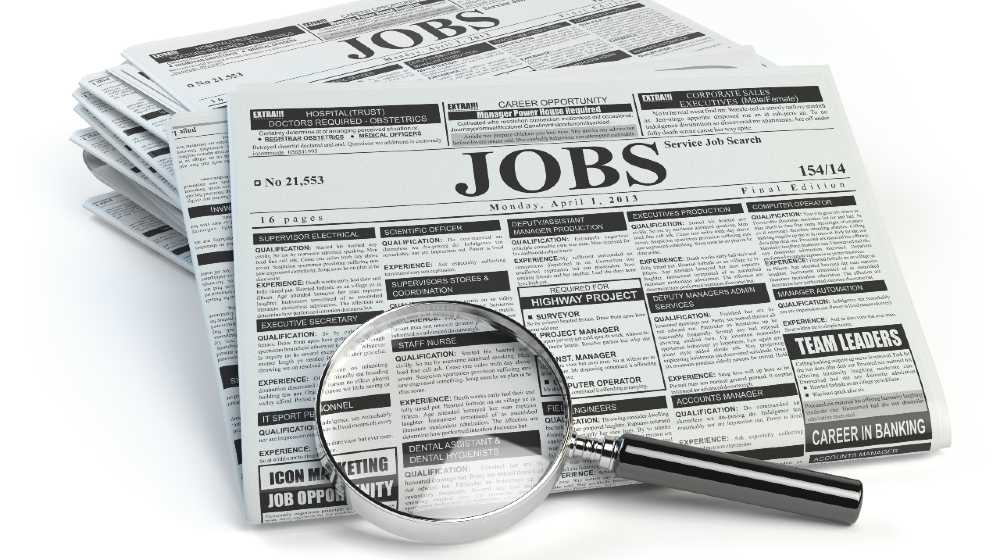Job Openings
US Has 10M Job Openings While 8.7M Workers Look For Work

According to the latest data from the Bureau of Labor Statistics, the number of US job openings soared to a record 10.1 million in June. This means businesses are on a frantic hiring binge as they try to fill vacancies.
RELATED: Retail Workers Leaving Jobs For Better Ones
Record Job Openings Means Economy is Reopening
Mark Hamrick, the chief financial analyst at Bankrate, said this is a sign of recovery. The job openings “adds an exclamation point or two to the sense of urgency employers are feeling,” he said.
Meanwhile, Sam Stovall of CFRA Research said that while demand is there, supply will have to catch up. “The economy is reopening. Unfortunately, because of the supply-demand imbalance, with so many businesses opening up, the demand has exploded, whereas the supply will take longer to catch up,” he explained.
April posted the previous record for job openings at 9.3 million. The June record of 10.1 million job openings not only broke the record. It also exceeded economists’ estimates of 9.1 million.
Meanwhile, the number of Americans who quit their jobs rose to 3.9 million in June. This data is what economists use to gauge worker confidence. April 2021 still hotels the record for quitting at 4 million.
Hiring Numbers Rise As Well
At the same time, hiring numbers went up to 6.7 million. Last May, the hiring rate posted 5.9 million new workers. The highest demand for workers came from business and professional services, retail trade, and hospitality.
This includes food service and accommodations. In terms of regionality, the South experienced the most bustling activities. Both the number of job openings and the number of workers quitting their jobs increased.
In contrast, layoffs posted a record low of 1.3 million. Stovall thinks that it means more and more workers are sticking it out with their present jobs. “It could be that more and more companies are increasing salaries in order to attract and retain their employees. If people are making a better wage, a living wage, then they’re more likely to stick with it,” Stovall said.
Good News/Bad News
Economists and market strategists said that the present conditions show a good news/bad news scenario. Demand for workers is pushing up salary rates, especially on low-level workers. The labor shortage also means businesses are experiencing strong demand for goods and services right now. This means continued recovery in the labor market.
Last Friday, the Department of Labor also reported some 8.7 million potential workers looking for jobs. They are part of the labor force counted among the unemployed.
The downside of this heightened demand for labor is that it affects businesses’ bottom lines. Right now, price increases in many raw materials and other supplies are leading to higher input costs. The inflationary pressures that cause higher prices are due to disrupted supply chains, including lack of raw material.
“We know that the biggest irritants with respect to inflation lately have been more related to supply constraints,” Hamrick said. He did say that the pressure might be temporary. “We do see some dominos falling… gasoline may be peaking, we already turned that corner on lumber.”
Inflation Risk If Job Openings Continue to Rise
Joseph LaVorgna, managing director and chief economist of the Americas at Natixis, said that risks remain present. In a research note, he wrote that “It appears that further recovery in the labor market is on the horizon. However, it may come with upside inflation risk.”
Jay Hatfield, portfolio manager at Infrastructure Capital Management, thinks it’s already happening. The generous fiscal stimulus plus consumer-friendly interest rates might be steering people away from getting back to work.
The 10.1 million job openings at the end of June are evidence. “The job opening number is also exacerbated by supplemental pandemic unemployment programs that disincentivize going back to work,” he said.
Watch the CNBC Television video reporting that US job openings in June are at 10.1 million:
What do you think of the labor distortion going on right now? Do you think things will settle down, or do you foresee further distortion in the job market until the end of the year?
Let us know what you think. Share your comments below.



